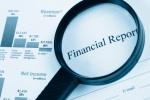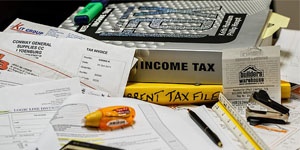FINANCIAL TUTORIAL
BUILDING WEALTH
A Guide to Your Personal Income Tax: Avoid Awful Surprises
Who loves to be surprised by the Internal Revenue Services? No one (unless it is a tax refund). The federal agency has its way of shocking taxpayers, in a good or bad way. How to deal with such surprises?
The first - and ...
An Introduction to Stocks
Imagine this: you are a company owner, you get income but you don’t go to work, you just do what you want and the money keeps coming in. This sounds like what most of us dream of, money without the work. However, as the world is run by money ...
Connection of Inflation and Interest Rates
We cannot simply ignore the connectivity of inflation and interest rates. Both items are interrelated. So, whenever there is a news item about a country’s inflation rate, traders and speculators, even the government and the general public, a ...
Digesting Financial Statements: Cash Flow
Companies generate money from borrowers and/or borrow money from creditors. Next, firms purchase assets and/or finance projects and programs. Then, assets and inventory fuel operations in order to earn money. Lastly, entities pay costs and taxes b ...
Digesting Financial Statements: Earnings
For assessing how a company performed in a given period, the relation between income and cash flow statements should be taken into account. Several items in a financial report have an equivalent; however, the cash flow does not usually match its c ...
Digesting Financial Statements: Filing
Companies need to file several financial reports in different periods with the Securities and Exchange Commission.
14A Proxy Statement - Given before the annual shareholders’ meeting, this document outlines the propos ...
Digesting Financial Statements: Introduction
Financial statements open a window how healthy a company is (in terms of finances). This document presents the financial activities of a person or an entity. Basically, it presents the financial condition of an individual or business.
&n ...
Digesting Financial Statements: Long-Lasting Assets
Long-lived assets, also known as non-current assets, is any asset a company expects to keep for at least one year. Such assets are expected to boost the business in one way or another. But not all long-standing assets are bought by the entity. The ...
Digesting Financial Statements: Long-Lasting Liabilities
Long-lived liabilities refer to obligations which are due more than a year. Some examples of long-term debt include convertible bond and capital lease obligations. Long-term liabilities are classified as either financing (debt instruments) or oper ...
Digesting Financial Statements: Pension Plans
Deducing on the topic we previously discussed, this tutorial now puts the spotlight on the pension fund. It is a distinct long-term obligation for majority of companies, but it is not given much emphasis in the financial statement. But when includ ...
Showing items 1 - 10 of 32
POPULAR ARTICLES
ECONOMIC CALENDAR
| Time | Country | Indices | Period |
|---|---|---|---|
| 05:02 | Trade Balance | Nov | |
| 07:00 | Economy Watchers Survey | Nov | |
| 09:00 | Industrial Production | Oct | |
| 10:00 | SECO Consumer Confidence | Nov | |
| 11:30 | Sentix Investor Confidence | Dec | |
| 01:50 | M2 Money Supply + CD | Nov | |
| 02:01 | BRC Retail Sales Monitor | Nov | |
| 02:30 | NAB Business Confidence | Nov | |
| 05:30 | RBA Interest Rate Decision | Dec |


















